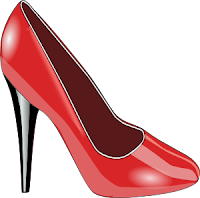The Chibchas or Muiscas Explain Creation
In 1536, the Spanish arrived on the plains of Bogotá and explored the Altiplano Cundiboyacense. There, they found the third largest group of indigenous inhabitants in America. These indigenous people called themselves the Muiscas, which meant ‘the people’. They called their language Chibcha. Today, these words are both used when describing the natives of the Altiplano.
The Muiscas were not a united group, but rather a collection of city states. The majority of the power was held by two main cities – what today are called Bogotá (then called Bacatá) and Tunja (then called Hunza) located in Boyacá. These two cities were mortal enemies and each enlisted the loyalty and help of near by cities in the many battles they had between them. Despite their constant fighting one city remained neutral amid the conflicts -- Sogamoso (then called Sugamuxi) also in Boyacá. This city was the religious center of the culture. [Today, you can see a rebuilt religious center and Temple by visiting the Archeology museum in Sogamoso -- learn more here http://raisingcolombiankids.blogspot.com/2009/03/museo-parque-arqueologico-de-sogamoso.html].
In the social structure of the Chibchas, the village leader -- or CACIQUE (kah SEE kay) -- was at the top. Below him was his family, then the priests -- JEQUES (HEH kays), and then the warriors -- GÜECHAS (GWAY chuhs). Following these groups, the communities were further stratified according to the work they performed in the community. At the bottom of the social structure were the slaves, who were for the most part prisoners captured in warfare.
The family was at the base of the society. Several families formed a clan and several clans a tribe. The tribe would then pay tribute (gold, food, blankets and work) to the caciques.
The Chibchas lived in huts called BOHÍOS. These huts were circular with thick wooden posts forming the circle and a roof made of straw. The houses were surrounded by high fences.
The Chibchas were great potters [See the following posts: http://raisingcolombiankids.blogspot.com/2009/08/raquira-souvenirs-galore.html and http://raisingcolombiankids.blogspot.com/2009/08/tia-isabel-our-famous-potter-of.html]
They were also metal workers creating amazing works in gold and copper. The gold, however, was not found locally. The Chibchas traded salt and emeralds in order to acquire it from the Indians in the Magdalena river valley.
Muiscas were also great weavers. Using cotton and other plant fibers, they made blankets and all sorts of clothing. In addition, they wove baskets and other household items from plant material.
Chibcha religion consisted of a collection of gods. All of them were servants to the main author of all creation and supreme god Chiminigagua.
Chiminigagua was omnipotent and the author of the creation of the world. He was the only light that existed when all else in the universe was dark. When he first created the earth, all was in darkness. In order to bring light to the universe, Chiminigagua created two large, black birds and threw them into the openness of space. When the birds breathed out of their beaks, their breath created an incandescent light, and thus the cosmos was illuminated. Their breath can still be seen today in the Milky Way.
Chiminigagua then created the rest of the universe and the earth. After creation, he taught the importance of worshipping the Sun (Xué or Suhá -- male) and the Moon (Chía -- female).
Chiminigagua was never worshipped directly, but rather the worship of the Sun and the Moon were the worship of Chiminigagua.


Comments